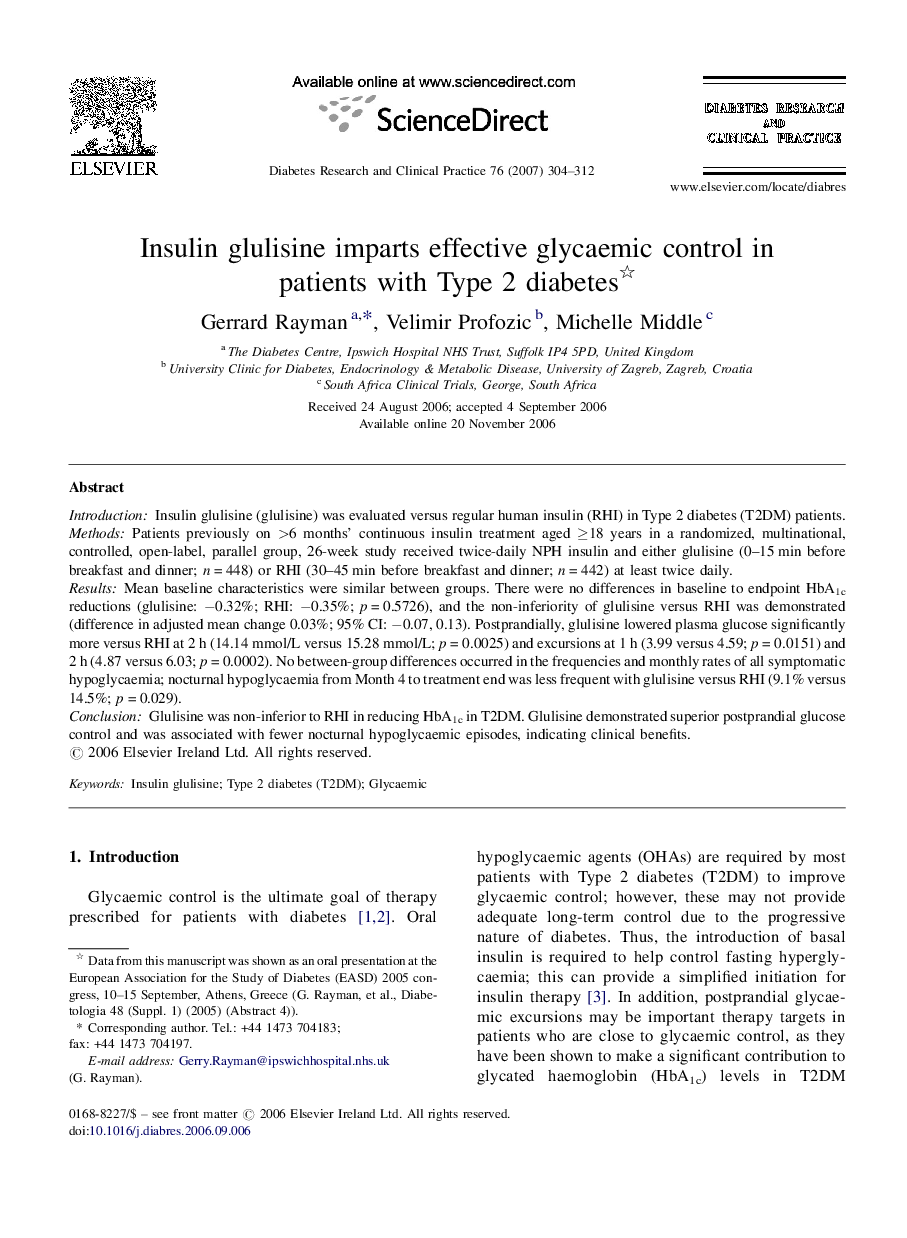| Article ID | Journal | Published Year | Pages | File Type |
|---|---|---|---|---|
| 2798904 | Diabetes Research and Clinical Practice | 2007 | 9 Pages |
IntroductionInsulin glulisine (glulisine) was evaluated versus regular human insulin (RHI) in Type 2 diabetes (T2DM) patients.MethodsPatients previously on >6 months’ continuous insulin treatment aged ≥18 years in a randomized, multinational, controlled, open-label, parallel group, 26-week study received twice-daily NPH insulin and either glulisine (0–15 min before breakfast and dinner; n = 448) or RHI (30–45 min before breakfast and dinner; n = 442) at least twice daily.ResultsMean baseline characteristics were similar between groups. There were no differences in baseline to endpoint HbA1c reductions (glulisine: −0.32%; RHI: −0.35%; p = 0.5726), and the non-inferiority of glulisine versus RHI was demonstrated (difference in adjusted mean change 0.03%; 95% CI: −0.07, 0.13). Postprandially, glulisine lowered plasma glucose significantly more versus RHI at 2 h (14.14 mmol/L versus 15.28 mmol/L; p = 0.0025) and excursions at 1 h (3.99 versus 4.59; p = 0.0151) and 2 h (4.87 versus 6.03; p = 0.0002). No between-group differences occurred in the frequencies and monthly rates of all symptomatic hypoglycaemia; nocturnal hypoglycaemia from Month 4 to treatment end was less frequent with glulisine versus RHI (9.1% versus 14.5%; p = 0.029).ConclusionGlulisine was non-inferior to RHI in reducing HbA1c in T2DM. Glulisine demonstrated superior postprandial glucose control and was associated with fewer nocturnal hypoglycaemic episodes, indicating clinical benefits.
